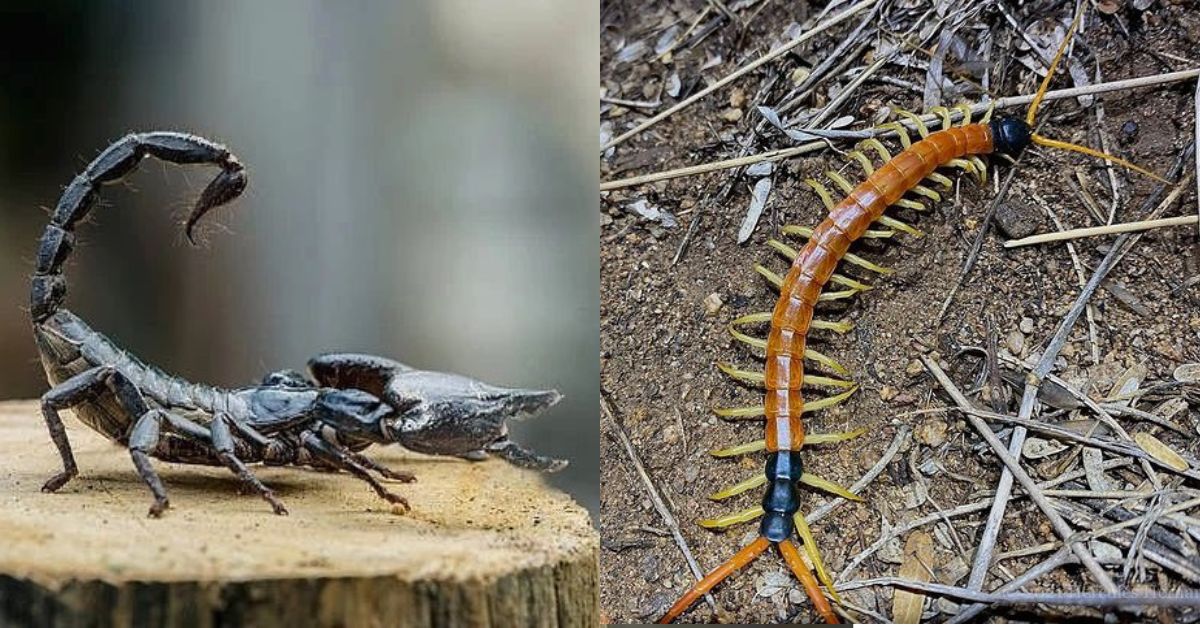Dangerous Animals In Thailand You Need To Stay Away From
Thailand is surrounded by stunning coastlines, spectacular coral reefs, and some of the best diving in the whole world. Further inland, you’ll also see magnificent rubber plantations and verdant jungles dotted with golden temples. Furthermore, with around 2000 species, Thailand is home to more than 10% of the world’s animals.
Imagine being surrounded by the sounds of wild dogs and tigers in the ancient jungles of Thailand while venomous spiders and snakes hide in the plants, capable of fatally harming humans.
If this sounds impressive, welcome to Thailand, a fascinating Southeast Asian wonder that reveals an entire universe brimming with dangerous predators and deadly beasts!
So, come along on an exciting adventure and delve deeper into the chilling truths of the most dangerous animals in Thailand.
10 Dangerous Animals In Thailand
1. Giant Centipedes
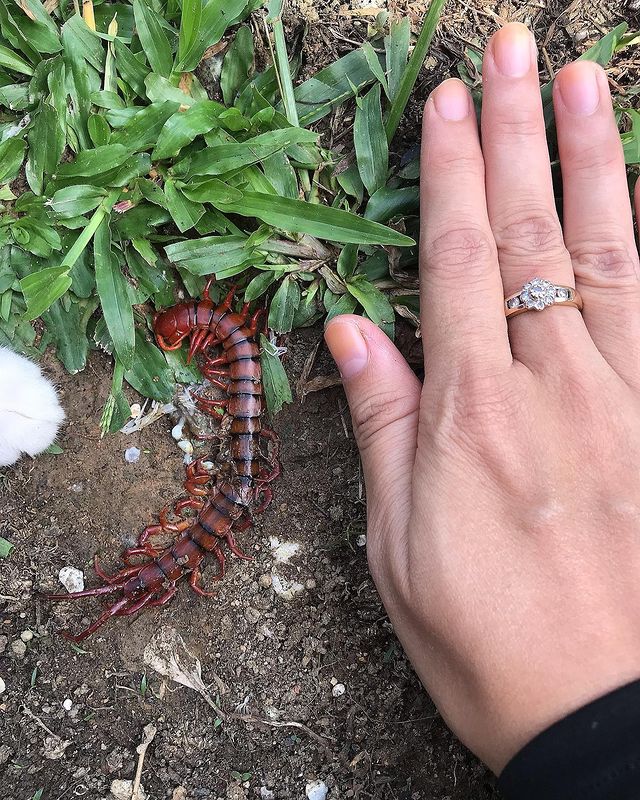
In Thailand, you can find giant centipedes in both urban and rural settings, and they frequently reach immense sizes, particularly during the rainy season. To prevent drowning during intense rainfall, they often seek out indoor spaces. Centipedes may easily conceal themselves in a shoe or bag, and if they are disturbed and unable to hide, they will attack.
These dangerous animals in Thailand come with a venomous sting, which you should avoid at all costs since they have the potential to result in serious injuries and, in some cases, paralysis. Severe pain, loss of breath, swelling of the wounded area, muscle cramps, and other symptoms are some of the common characteristics of centipede venom.
It is crucial to get quick medical assistance if you suspect a centipede has assaulted you, since doing so will ensure the best solution. With the intervention of the antivenom, the effects of the centipede’s poison will be eliminated.
2. Black Scorpions
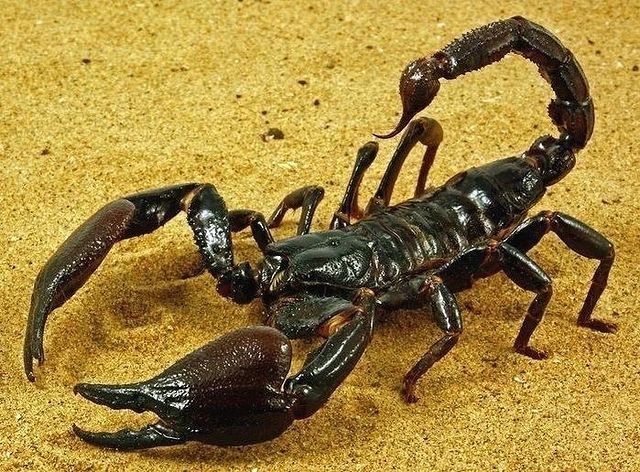
Black scorpions are extremely swift and can grow to the size of your hand. They feature a sharp proboscis that is used to inject the venom. The sting of a smaller scorpion is more powerful since the poison in their bulbous tails is more concentrated. When black scorpions come together in significant numbers, their venom has the potential to paralyze and kill the victim.
In addition to other serious side effects, scorpion venom frequently causes significant swelling, numbness, breathing problems, sweating, and reduced heart rates. That’s probably why black scorpions are considered some of the most dangerous animals in Thailand. Anti-venom injections, breathing assistance, antibiotics, and anti-tetanus shots are all parts of the treatment.
3. Monocled Cobra
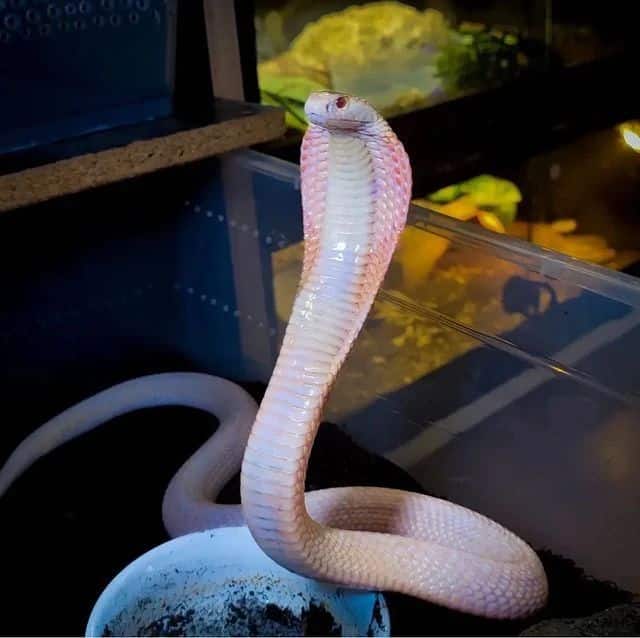
The monocled cobra is indeed one of the most dangerous animals in Thailand to encounter, especially in the capital of Thailand, Bangkok. However, the snake can also be found in grassy areas and tree holes, preferring swampy environments. The snakes prefer to spend the daytime in urban areas, hidden under houses and other covered spaces.
The fierce monocled cobra will attack if provoked even slightly. With its powerful neurotoxic and cytotoxic venom, this type of cobra is extremely lethal. A bite from this cobra, if it hits a vein, can kill an adult human within an hour due to its neurotoxic venom. The victim’s nervous system is the immediate target of a deadly dose of venom. The bite of a monocled cobra typically results in respiratory or cardiac failure and frequently results in death.
4. Malayan Krait
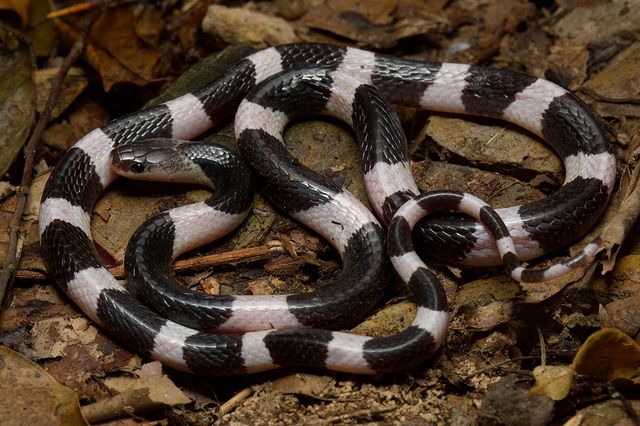
While the Malayan krait has appealing blueish-black and white cross bands on its entire body and tail, comparable to the king snake, it is not a creature to behold up or even dare approach, as it has an untreated fatality rate of 60–70% of victims.
The snake, however, is calm and cautious and prefers to keep to itself unless trapped or disturbed. The Malayan krait’s venom is neurotoxic and attacks the nervous system. As a result, a person could experience symptoms such as nausea, migraines, abdominal pain, and fainting. Without treatment, it could progress to epileptic fits, paralysis, and death in 12 to 24 hours. That’s why you need to stay away from these dangerous animals in Thailand at all costs.
5. Yellow Sac Spider

As we already mentioned, spiders are among the most dangerous animals in Thailand. The country is home to between 700 and 1,200 different species of spiders, including 15 that have yet to be found elsewhere.
Yellow Sac Spiders frequently resemble tarantulas due to their comparable hairiness, but they may be distinguished from other spiders by the large yellow sac at the bottom of their bodies and by their noticeable front fangs.
After the painful bite, the spider injects a particular amount of venom that causes agony and dizziness. A yellow sac spider bite can occasionally cause anaphylactic shock. The cytotoxin included in yellow sac spider venom can also cause necrosis in the bite wound.
6. Black Widow Spider
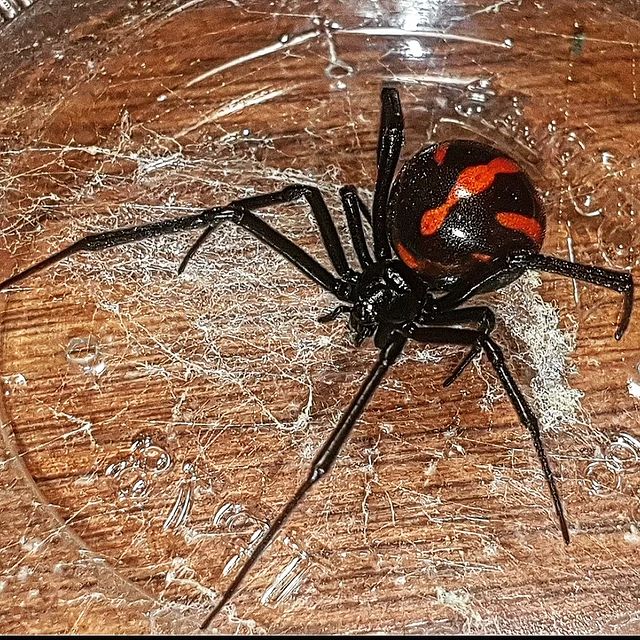
The black widow spider is another of the most dangerous animals in Thailand. However, it is most common in rural regions. You are unlikely to find them in your home since they prefer to reproduce and reside in areas that experience little disturbance.
Although the black widow spider’s red, hourglass-shaped mark is visually appealing, the actual effects of the bite are considerably more devastating. Their neurotoxic venom causes chest pain, aches in the muscles, nausea, cramps, and muscle tightness, in addition to paralyzing the diaphragm, which makes breathing challenging. Only youngsters, older people, and those with medical conditions have difficulties with bites, which makes fatalities from wounds rare.
7. Staphylinidae Beetles
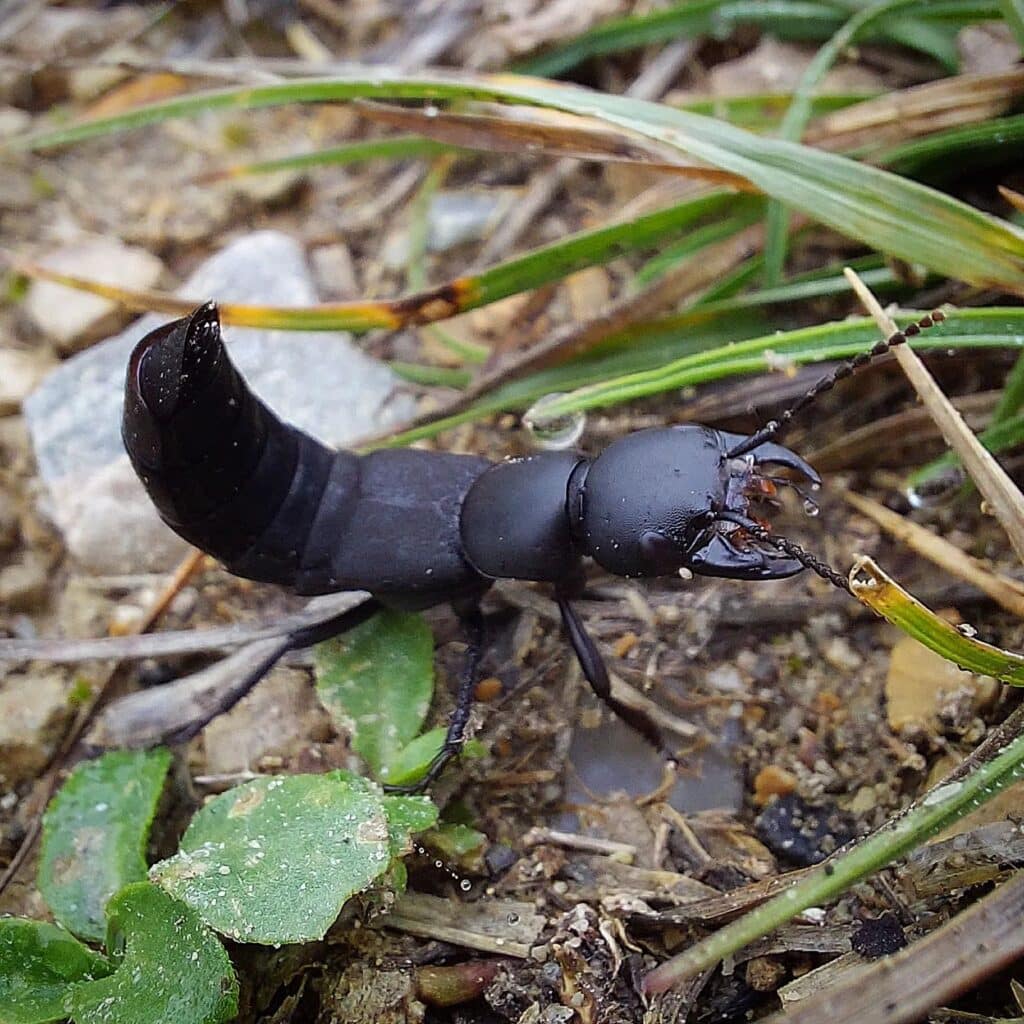
Thailand is home to many species of rove beetles from the Staphylinidae family. The “pandering” coelomic fluid produced by rove beetles is widely acknowledged for irritating and causing skin blisters. As a result, Staphylinidae beetles are considered some of the most dangerous animals in Thailand. Although these fights do not sting, grinding them on your skin will distribute their venomous bodily fluid, causing harmful damage to the epidermis and body cells.
You may experience itching, a burning feeling, blisters, or red pimples or pustules on your skin. Even worse, the response could extend to other areas of the skin. Vomiting, a high fever, physical cramps, and migraines are indications of extreme cases. In addition, if it affects the eye, the victim could go blind.
8. Bull Shark

There are probably at least 9 different species of sharks in the deep seas off the coast of Thailand. Although the great white shark and tiger shark are very fierce, people are fortunate not to encounter them in Thailand. As a result of their aggressive nature and capacity to move up rivers, bull sharks are frequently regarded as the shark species that pose the greatest risk to people.
Bull sharks can grow to about 10 feet in length and are infamous for their aggression and propensity for migration. They favor coastal areas with relatively shallow waters, which increases the likelihood that people will come into contact with them. They have been connected to 117 human attacks in all, 25 of which resulted in fatalities. This fact makes this particular species one of the most dangerous animals in Thailand.
9. Box Jellyfish
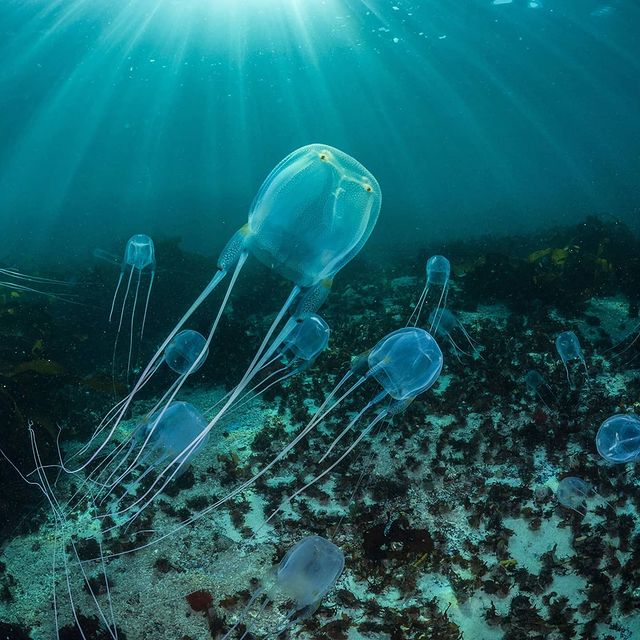
Although there are many life-threatening animals within Thailand, the waterways off Krabi, Phuket, Ko Lanta, and Phi Phi feature some of the most lethal species, including box jellyfish. Swimming here is dangerous since there have been reports of jellyfish attacks.
Box jellyfish are among the most dangerous animals in Thailand and the most venomous animals on Earth. Due to its nearly transparent tentacles and trail that extends two to three meters after its body, it poses a serious threat to swimmers unaware of its presence in the water.
The venom of the box jellyfish increases the release of stress hormones, which can raise blood pressure and provoke brain hemorrhage. After being stung, its victims experience life-threatening reactions that can lead to cardiac arrest, paralysis, or death within a short period.
10. Rockfish
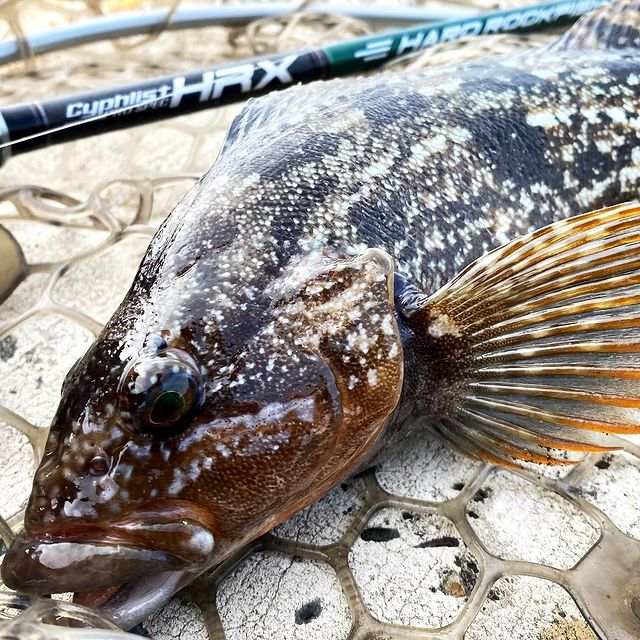
With their highly poisonous spines, rockfish, sometimes known as scorpionfish, are extremely harmful. Finding certain rockfish species might be difficult since they are skilled masters of camouflage. Since rockfish are found throughout the Indo-Pacific region, it would be beneficial if you exercise extreme caution while swimming in Thailand.
These stunning aquatic creatures employ their extremely strong venom to paralyze their victims. The sensation of being lightheaded, swelling, bleeding, burning, and blistering are common symptoms for those affected. However, in severe situations, vomiting, breathlessness, and seizures are also possible outcomes.
How to Avoid Dangerous Animals In Thailand
Shoes are the ideal hiding spot for spiders, centipedes, and scorpions since they prefer to stay cozy. For safety reasons, shake your shoes and clothing before putting them on to ensure anything that might have crept inside throughout the night is compelled to leave first. Even inside and especially at night, wear shoes whenever possible. Standing on something with bare skin would be risky and certainly not worth it.
Try to stay away from long grass and rainforests when exploring the outdoors. Take a long stick and pound the ground in front of you as you walk to give any prospective snakes plenty of time to get away.
Take into account that most dangerous animals in Thailand are usually not interested in people, and their primary instinct is to escape from them. As a result, keep in mind that these animals are likely just as frightened of you as you are of them and that they are not likely to feel compelled to defend themselves if they don’t perceive you as a threat.
Even so, there is always a chance of going into anaphylactic shock if you are bitten, even if the creature that bit you wasn’t highly venomous and may have only caused temporary pain, like a bee sting. Since you can’t be sure how your body may respond, it’s best to get medical care as soon as you are capable.
Final Thoughts
Thailand is regarded as a land of wonders because of its rich biodiversity, historical islands, Muay Thai, thick jungles, big national parks, breathtaking coastlines, and magnificent coral reefs. Nevertheless, you ought to proceed with caution while exploring nature to prevent potentially harmful assaults from the most dangerous animals in Thailand.

Nato is a content writer and researcher with a background in psychology who’s eager to explore the wonders of nature. As a travel enthusiast and animal lover, she hopes to inspire others to discover and cherish the beauty and importance of the natural world.

